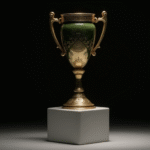Introduction to the Jaguar and its Significance
The upcoming World Cup Soccer will feature Zayu, a mascot inspired by the jaguar—an iconic species native to Mexico and 17 other Latin American countries where it is distributed.
The jaguar, the largest feline in the Americas and third-largest in the world after leon and tiger, can reach lengths of one to two meters and weigh between 45 to 160 kilograms. This solitary animal primarily feeds on caimans, deer, tapirs, birds, fish, and even domestic animals like cattle, sheep, and goats.
Ecological Importance of Jaguars
Jaguars, known as apex predators, play a crucial role in maintaining the balance of ecosystems. Their predatory actions regulate the population sizes of various species, preventing any single species from monopolizing resources and diminishing biodiversity within an ecosystem—a concept referred to as “landscape shaping” in ecological terms.
Jaguar’s Cultural and Conservation Significance in Mexico
In Mexico, the jaguar holds symbolic value due to its strength, beauty, and hunting prowess in both land and water. This makes it a particularly dangerous predator for its prey, and the presence of jaguars in an area is often seen as a sign of a healthy ecosystem.
The jaguar’s conservation status is of high priority for the countries it inhabits, ranging from Argentina to northern Mexico. The International Union for Conservation of Nature (IUCN) classifies the jaguar as “Near Threatened,” and since 1973, it has been listed under Appendix I of the Convention on International Trade in Endangered Species of Wild Fauna and Flora (CITES), prohibiting the trade of this species and its parts.
Recent Efforts for Jaguar Conservation
Just recently, 19 Latin American countries gathered to design a Joint Action Plan for Jaguar Conservation. The plan emphasizes coordinated protection efforts among countries, resource and knowledge sharing to maintain biological corridors for jaguar movement, and collaboration to address human-jaguar coexistence challenges.
Challenges to Jaguar Conservation
Despite these efforts, jaguars still face threats from poaching for their skin, teeth, claws, and other body parts. Additionally, ranchers view jaguars as a threat to their livestock, and urban expansion continues to fragment and degrade jaguar habitats.
The Role of Zayu as a Symbol for Jaguar Conservation
As the World Cup Soccer mascot, Zayu represents not only sportsmanship but also the importance of jaguar conservation. By raising awareness about this iconic species, Zayu helps promote understanding and appreciation for the critical role jaguars play in maintaining Latin America’s rich biodiversity.
Key Questions and Answers
- What is the jaguar? The jaguar is the largest feline in the Americas and the third-largest cat species globally, after leon and tiger.
- Why is the jaguar important? Jaguars are apex predators that help maintain ecosystem balance by controlling the population sizes of various species and preventing resource monopolization.
- What is the jaguar’s status in Mexico? The jaguar holds cultural significance in Mexico due to its strength, beauty, and hunting abilities. Its presence is considered a sign of a healthy ecosystem.
- What challenges does the jaguar face? Jaguars are threatened by poaching, livestock predation, and habitat loss due to urbanization and agricultural expansion.
- What is the significance of Zayu as a mascot? Zayu, inspired by the jaguar, serves as a symbol for jaguar conservation and raises awareness about the importance of this iconic species in Latin America’s biodiversity.






